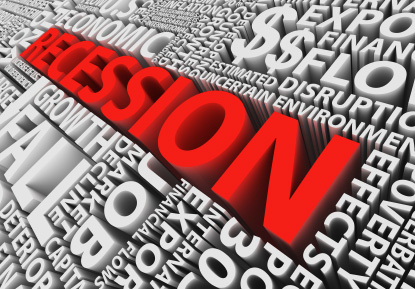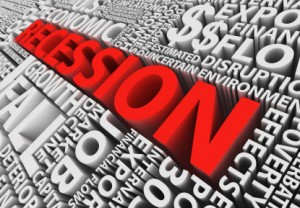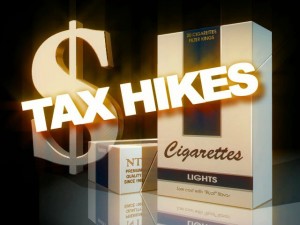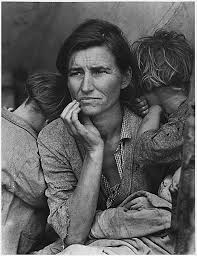Defined as a slowdown in economic activity usually lasting more than a few months, recession indicates a business cycle contraction and a fall in GDP. Recession is usually caused by a decline in aggregate demand.
There are many factors that contribute to the fall in demand but the major one is inflation. Whenever inflation persists in any economy, it reduces the purchasing power of money. Comparatively, one can purchase less with the money one already have. The higher the rate of inflation, the smaller the amount of goods and services, the consumer can purchase with the same amount of money. In an inflationary environment, people have tendency to reduce their spending. Many businesses try to curtail their expenditures by trimming their costs and so a fall in output takes place. This process results in a fall in GDP giving rise to recession.
Higher interest rate reduces borrowing and investment calling a fall in demand and so causes a recession. Falling real wages, falling consumer confidence, credit crunch which causes a decline in bank lending and further reduces investment and deflation which encourages people to delay their spending, are some of the factors causing a decline in aggregate demand followed by a recession.
Appreciation of domestic currency which makes exports expensive resulting in a decline in exports is also one of the reasons for recession to come into effect.
Click here for government certification in Accounting, Banking & Finance





5 Comments. Leave new
good topic 🙂
nicely written 🙂
The trajectory has been very well defined. In recession, the authorities take quantitative and qualitative measures, given the other factors like interest rate etc in the economy. Normally, what arises as a problem is that nobody knows the exact data and even if they do exist, there is time inconsistency prevailing in the market.
Well explained.
Nice selection of topic.. well written..
Great work